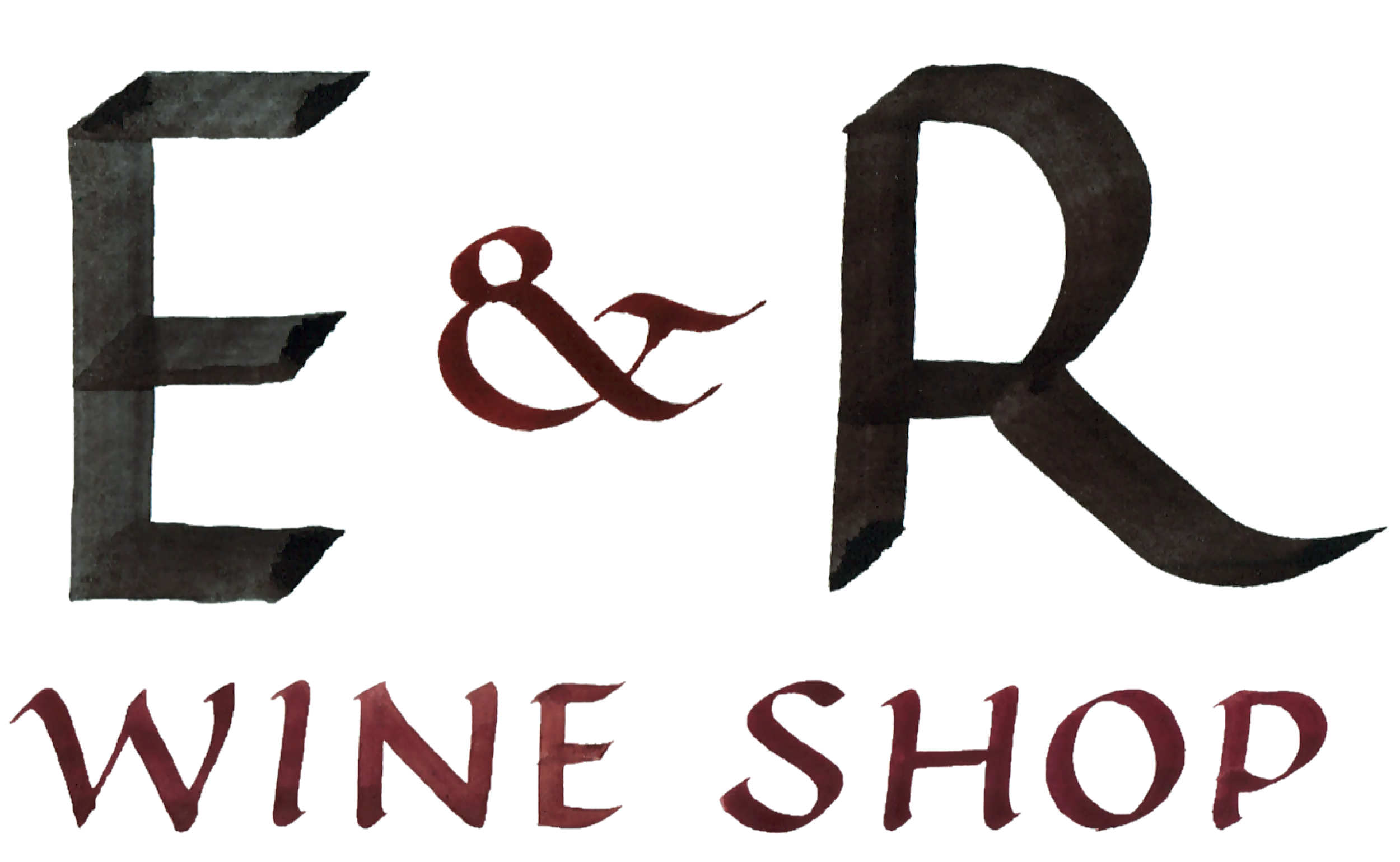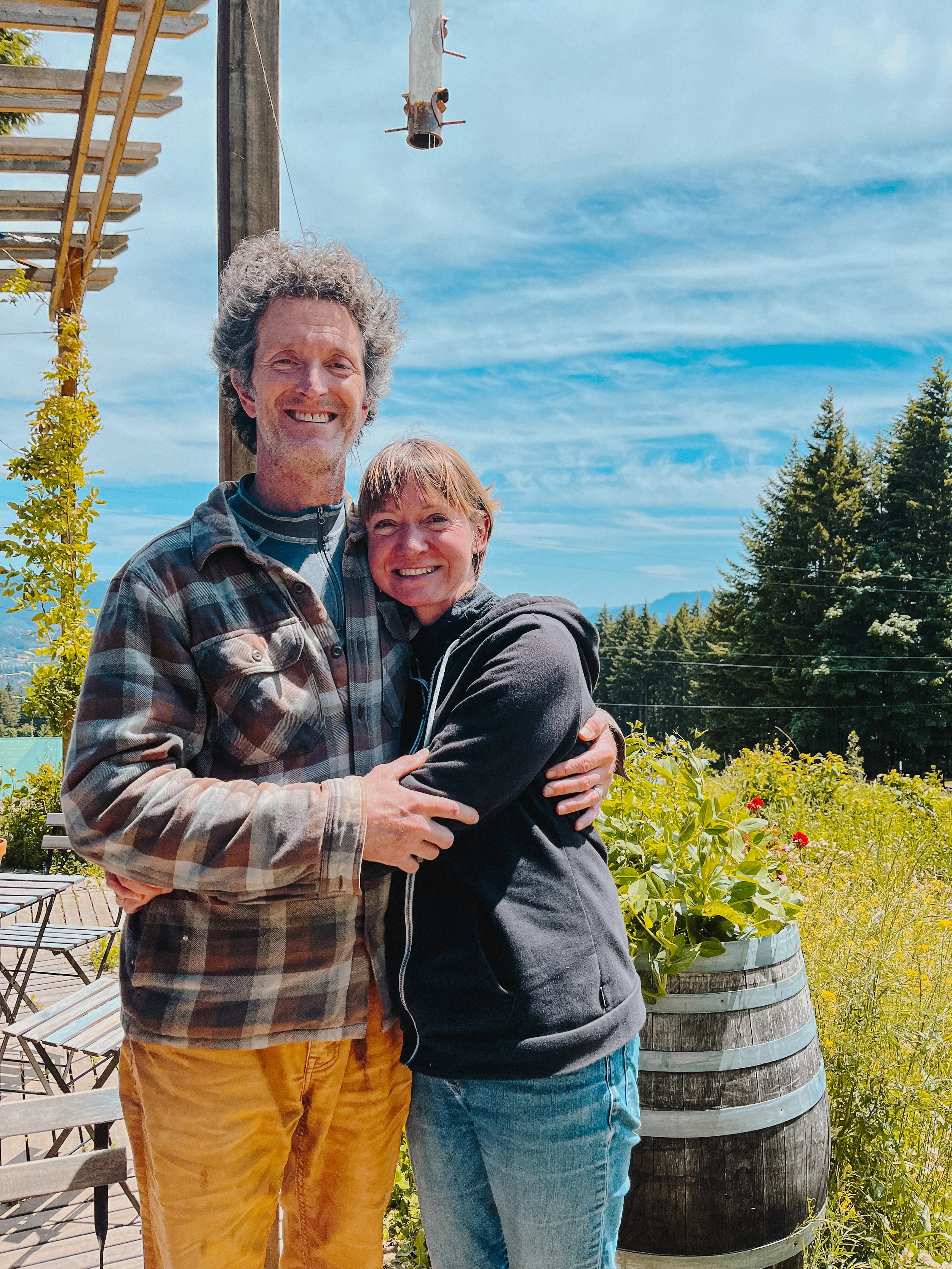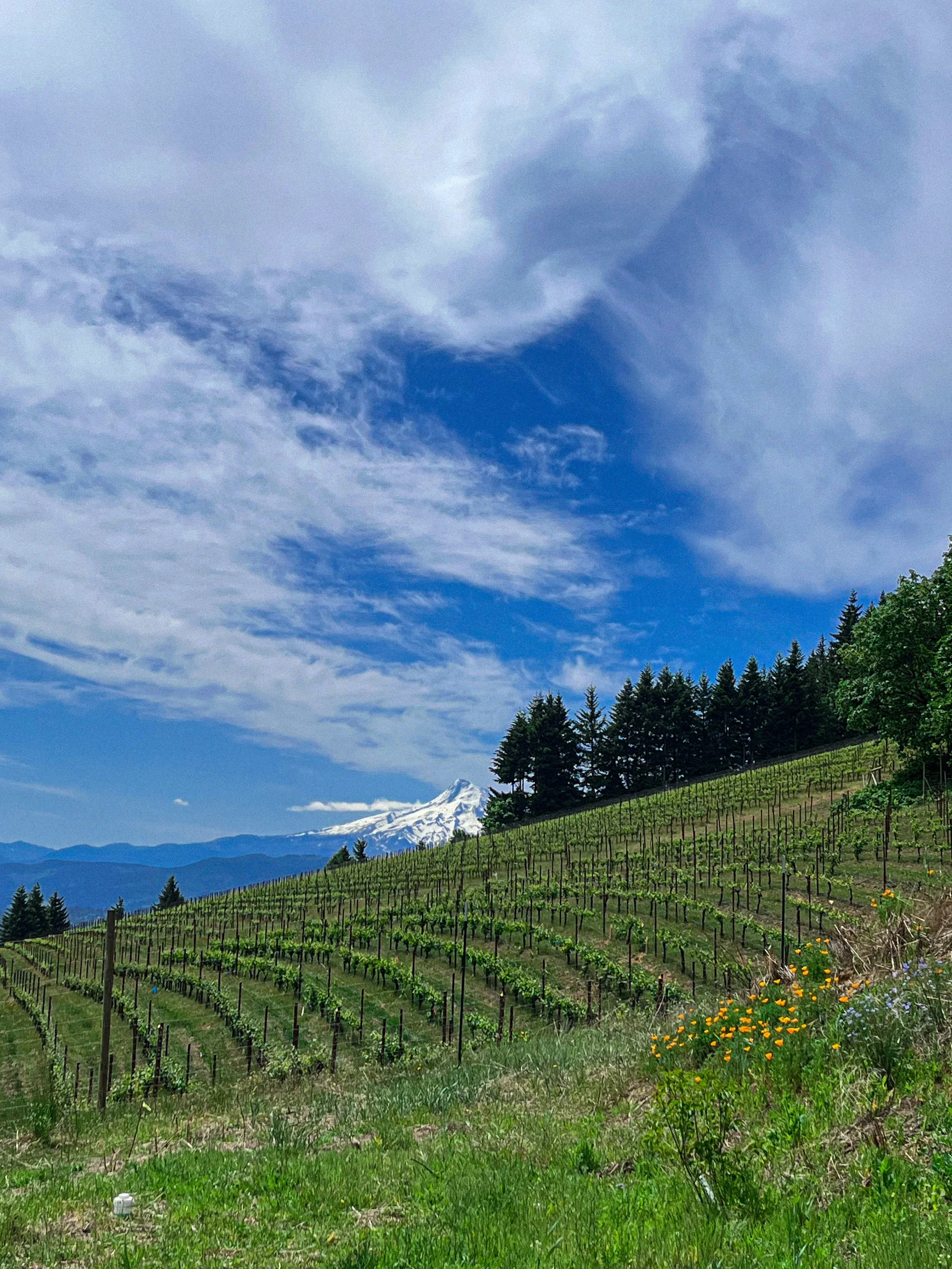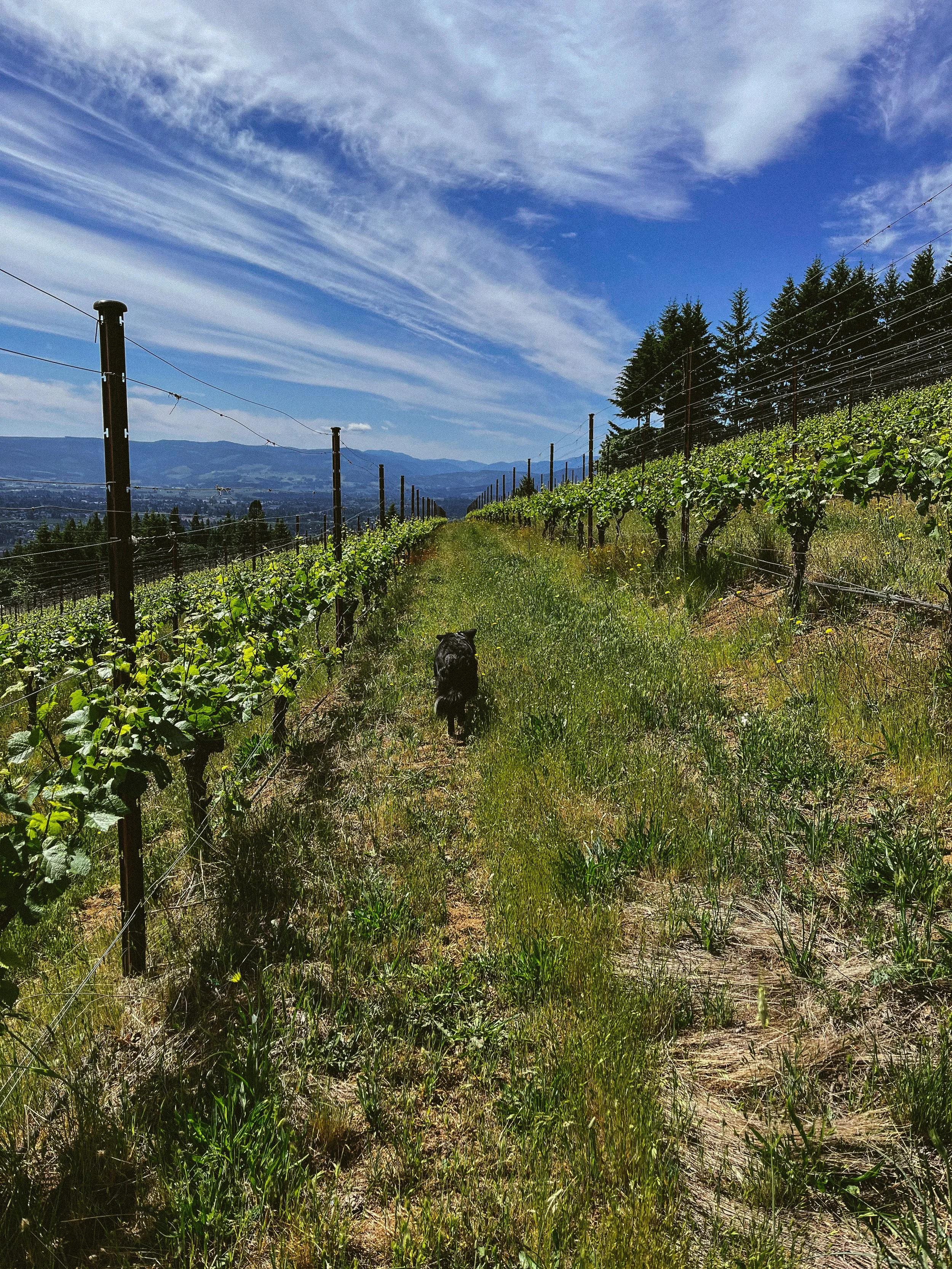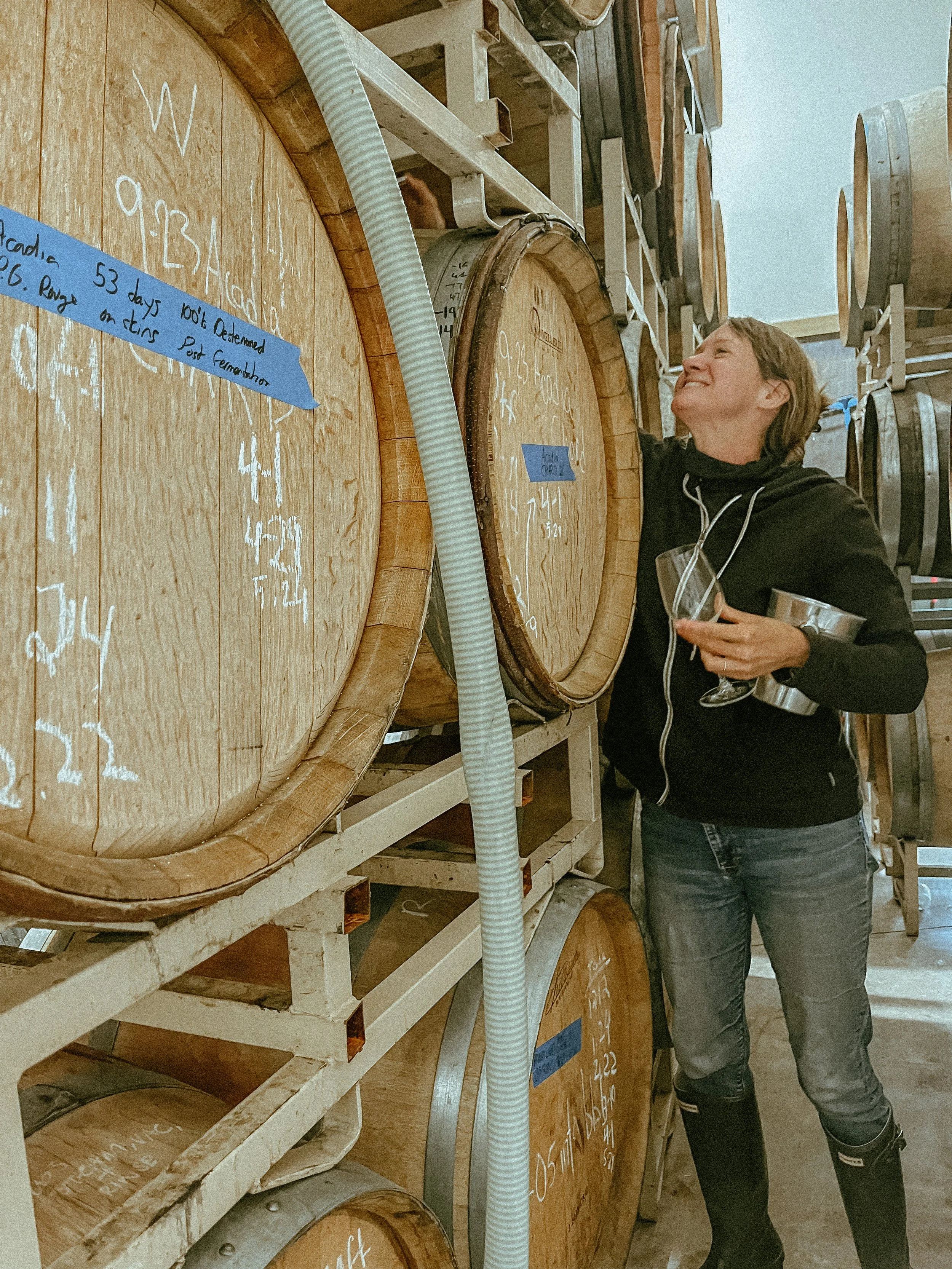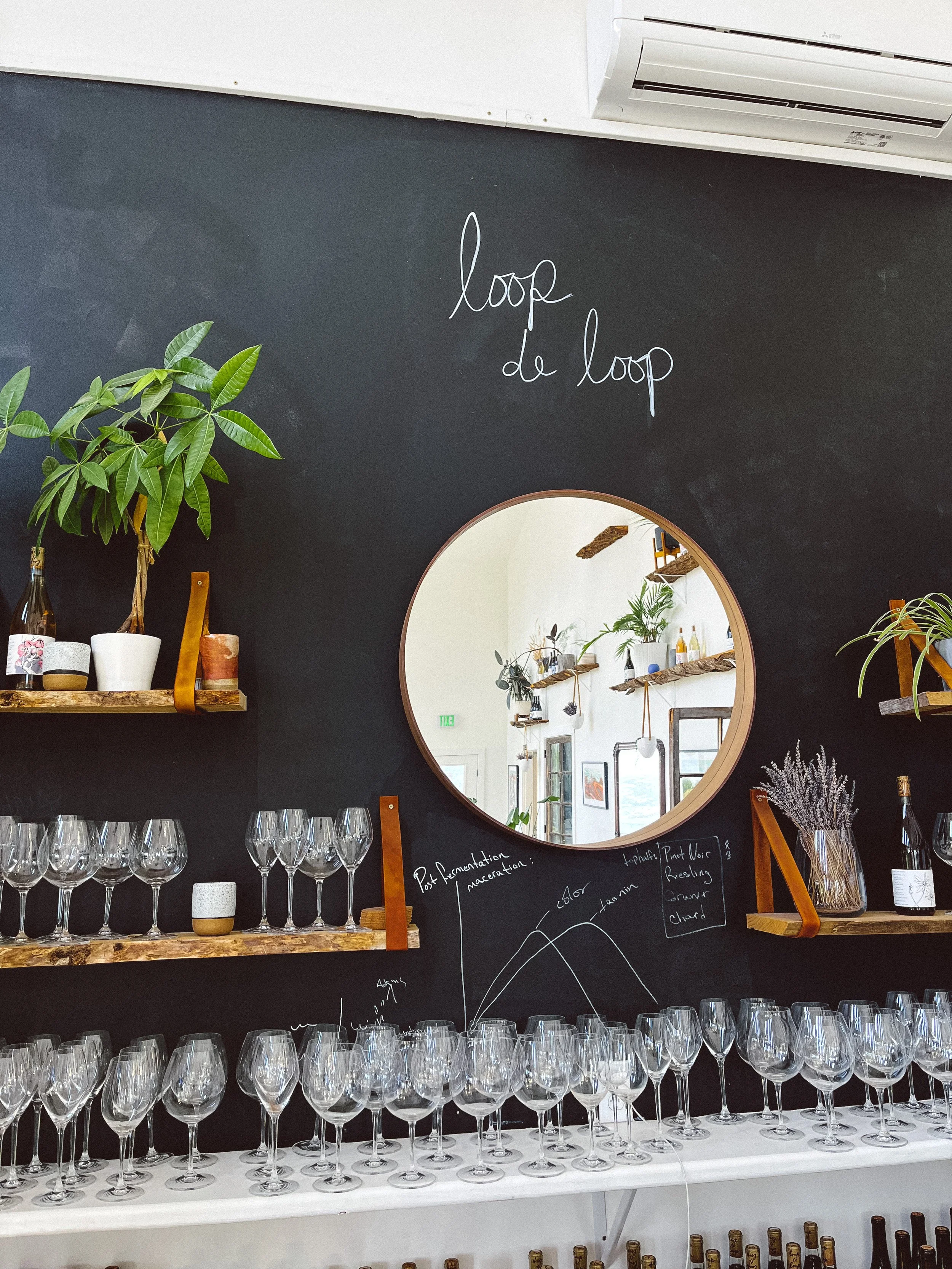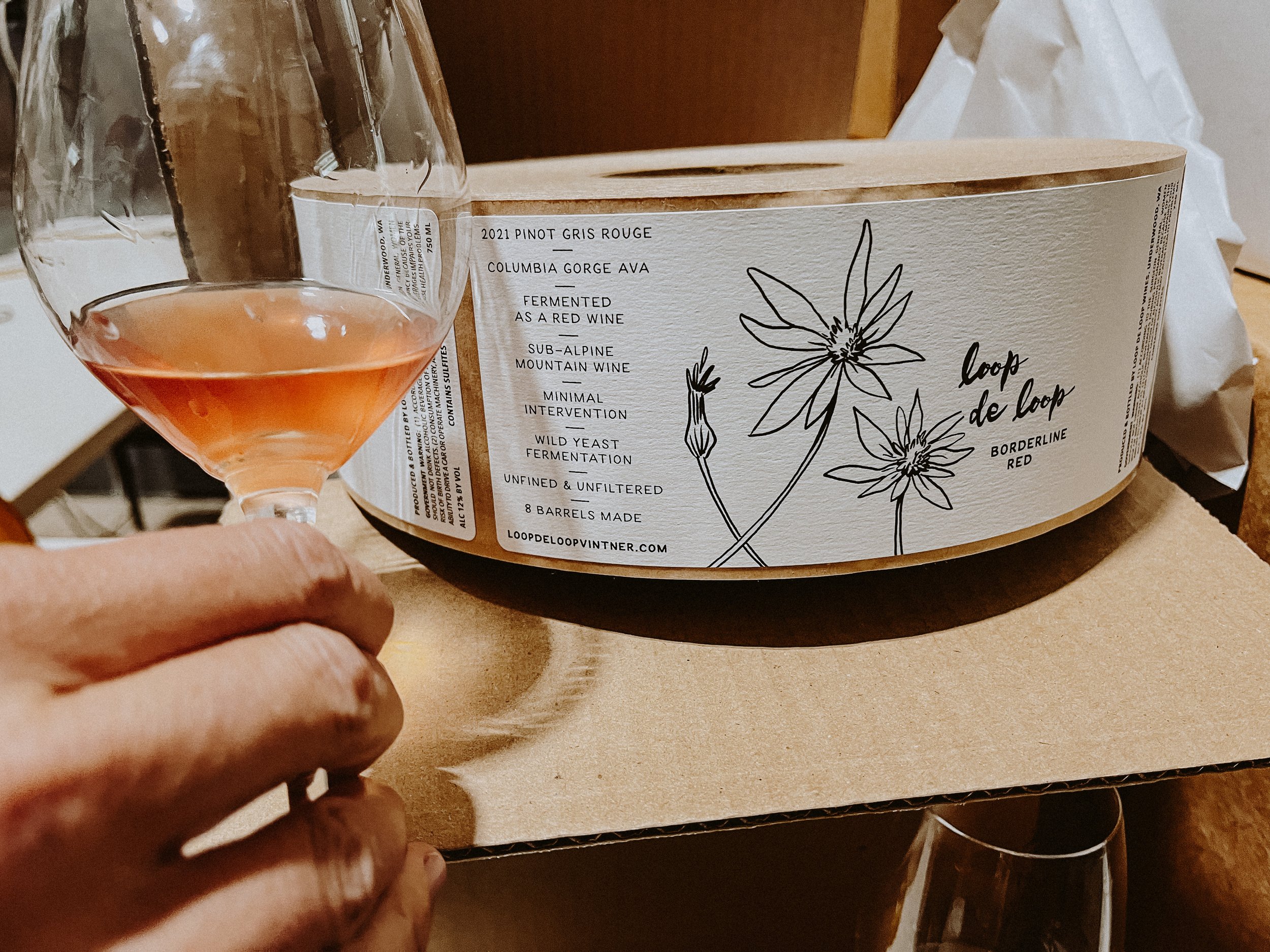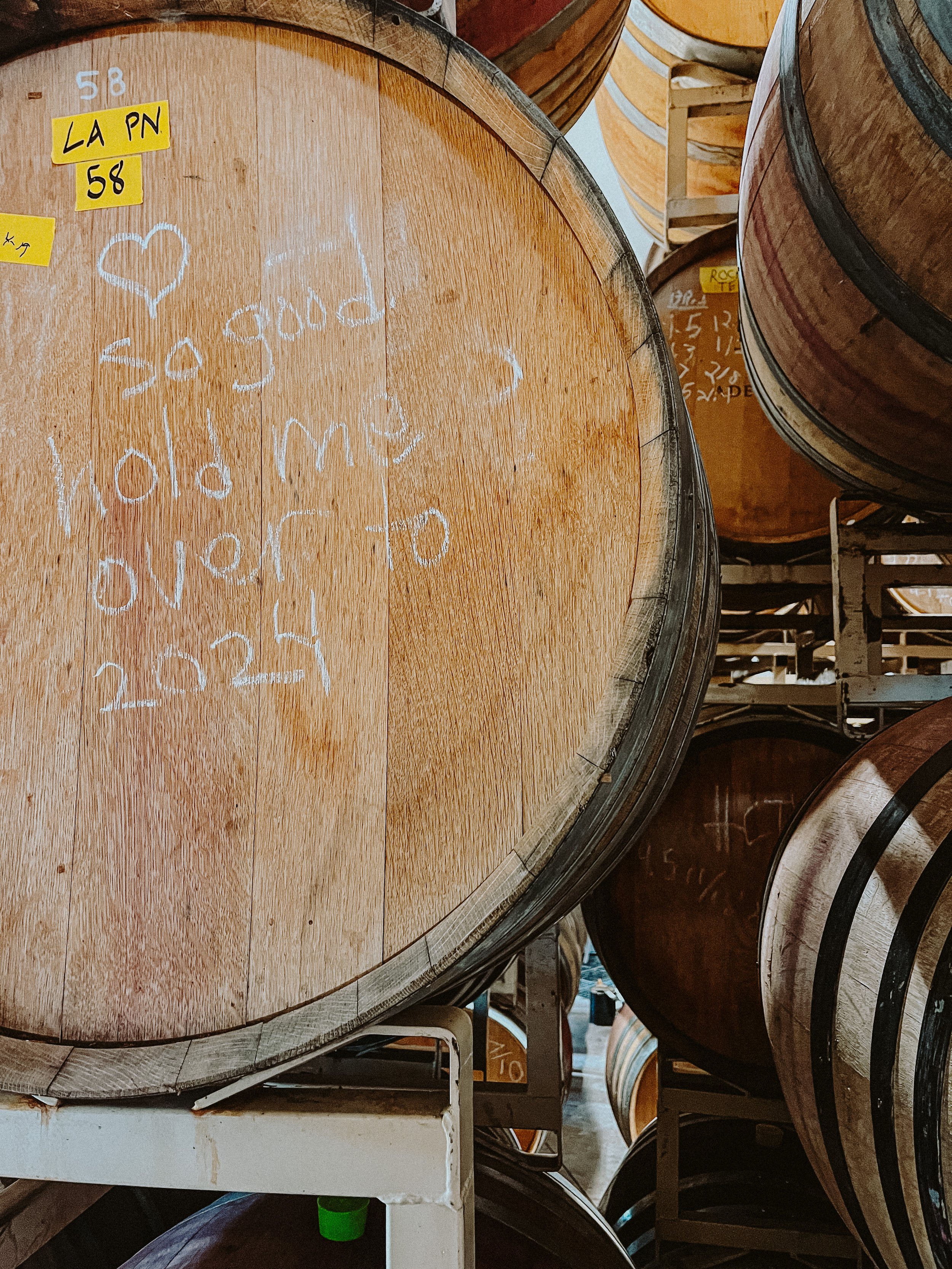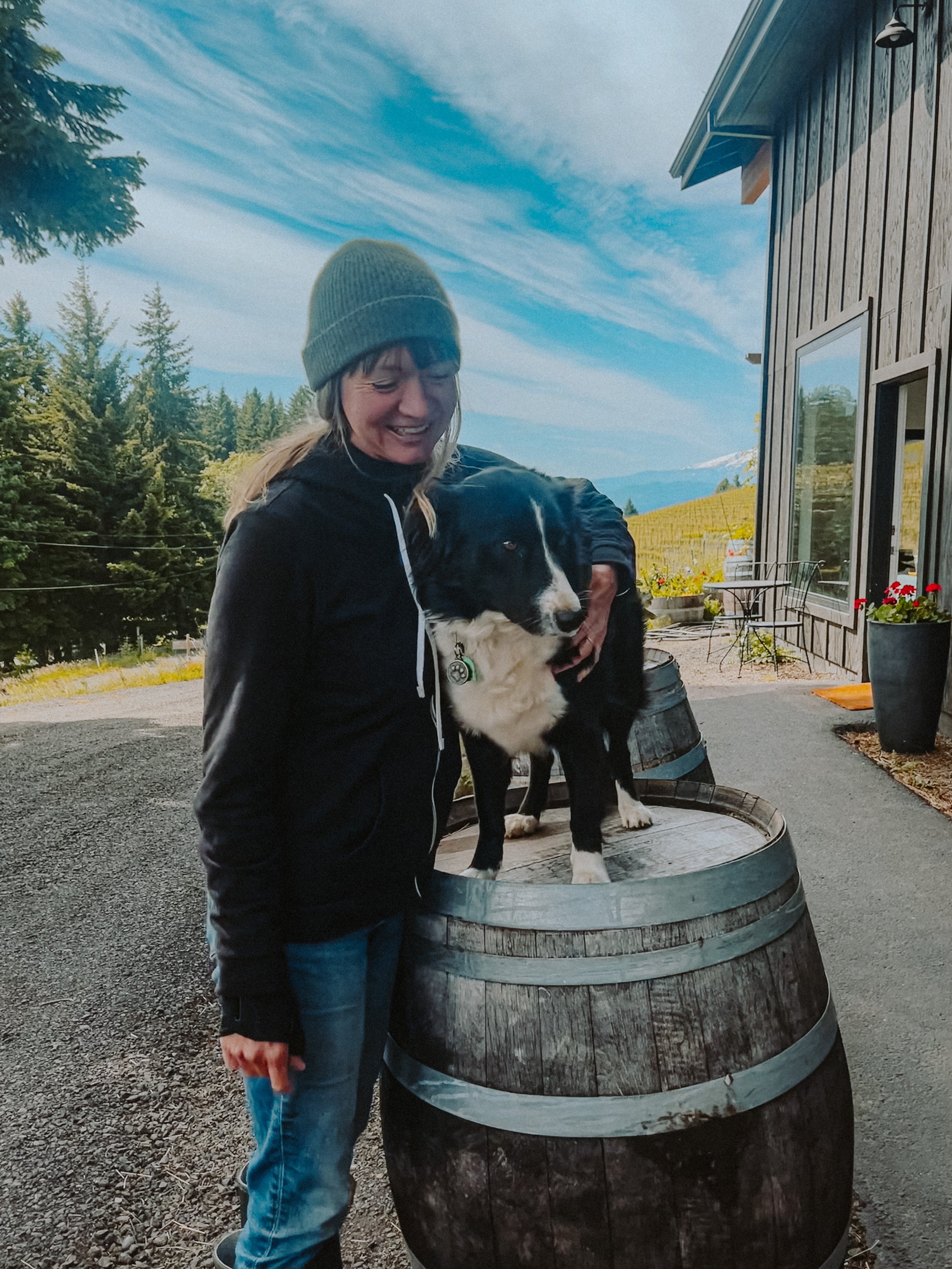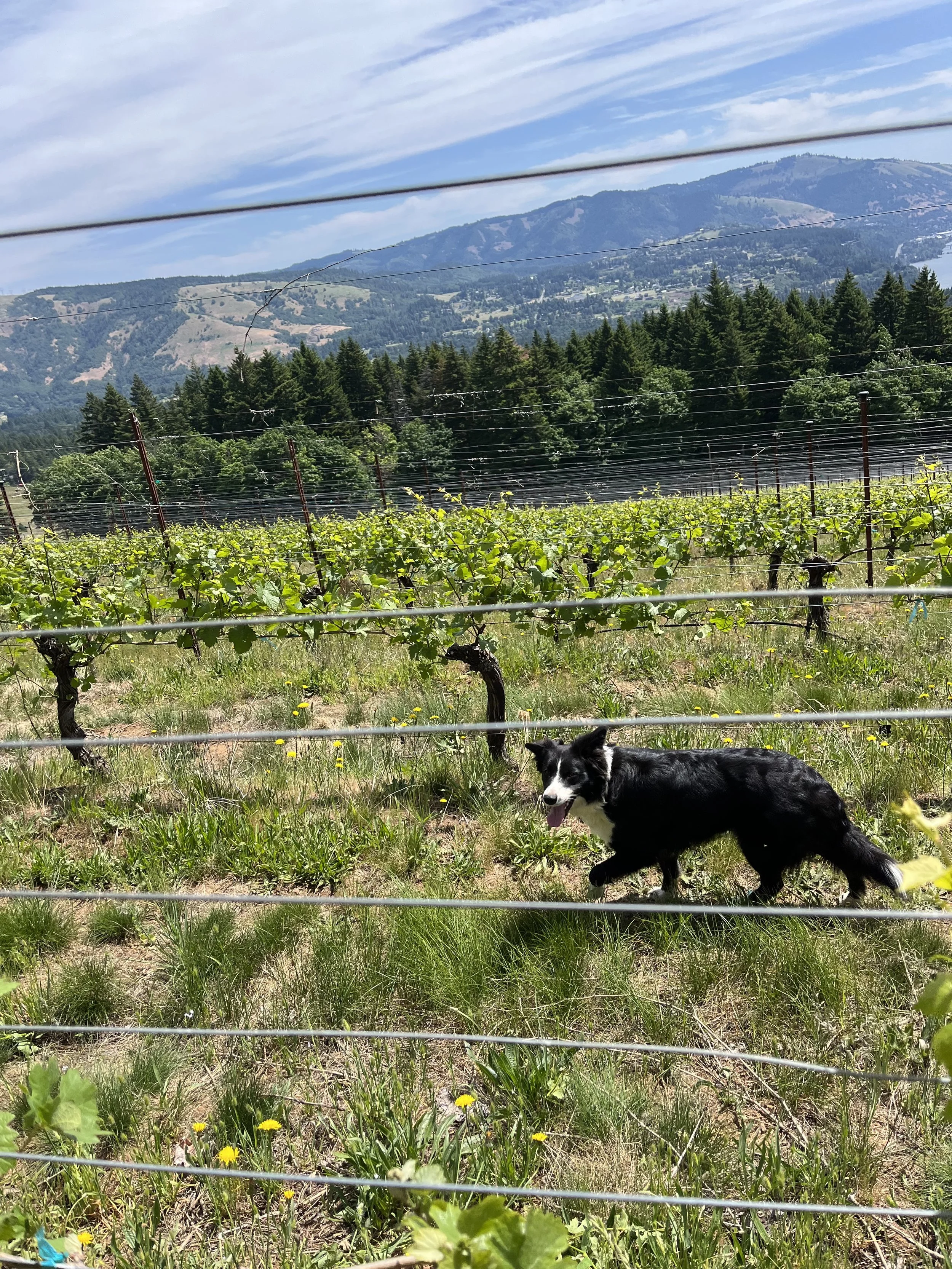Loop de Loop - Underwood Mountain - Columbia Gorge
Scott and Julia of Loop de Loop
In the Pacific Northwest there is something blowing in the wind… Standing in the middle of Loop de Loop’s vineyard you can see swallows flying high above their normal flight zone. What are they doing up there? The backdrop of Julia and Scott’s vineyard is the extinct shield volcano Underwood mountain that erupted about 850,000 years ago. Gusts of wind coming off the mountain blowdown goodies in the sky for the birds who fly high. Here in the Columbia Gorge, extreme exploration extends far beyond what we already know. Just past the Columbia River Gorge viewpoint you hang a left to cruise up to the woman owned winery, Loop de Loop. Passing a Mexican food truck at the bottom of the hill, Manny’s, I save the lunch idea for later. Up, up, up the road Julia Bailey-Gulstine and Scott Gulstine’s Light Anthology Vineyard feels like a secret garden. Planted nineteen years ago, this nine acre vineyard had been through a lot of harsh farming. As Julia and Scott rejuvenate the land with organic practices, you can see the vines happily smiling in the hands of new cultivators. A tender to many things, Julia has had her hands in the wine industry for a credible amount of time. From fine dining to learning from the late Patty Green, Julia’s wealth of knowledge reminds her that learning is a part of life, it never stops.
View from the tasting room
Loop de Loop’s small case production is entirely managed by Julia and Scott. Making her first wine in Palestine, Julia’s fearless ambition to experiment powers her project in the developing Columbia Gorge wine region. First being connected to wine in Europe at age 23, Julia absorbed what she could for 5 months traveling to wine regions throughout France and Italy. Back in Oregon, she found a job in the yellow pages with Argyle winery. Moving on to work with Patty and Jim at Patricia Green Cellars for a while, Julia decided to take a break form the industry. She followed her MA degree in international business living in Palestine for five years. This is where she made her first vintage. She recalls getting a delivery of grapes one day from a friend. He insisted that she should make wine! She believes she was most likely working with southern Rhone varietals. Small batch, Julia understood how natural it felt working with her hands again. After her time in Palestine, she came back to the Pacific Northwest for harvest and started Loop de Loop in 2012. Working hard and constantly investing her time in learning, Julia has the strength to push new cultivation in Underwood Washington. Selling her house in Portland in 2019, she is completely committed to the future of wine growing.
There is a tranquil energy to Julia and Scott’s estate. As you walk through the forested path to the vineyard, Julia can point out all the native plants and wildflowers that are awaking in the spring. With each step we are reminded of who lived on this land for hundreds of years before white settlers. With the abundance of edible roots, mountain huckleberries, and the wide Columbia river full of fish, Indigenous Tribes of Yakama, Cayuse, Umatilla, and Walla Walla knew this was the place of nutrients. Previous farming practices have taken a lot of good out of Julia and Scott’s vineyard, making the vines weak. A number of vineyard consultants advised them to rip out the existing vines and replant. It was Mimi Casteel, owner of Hope Well wine and second generation vineyard manager that believed the vineyard could heal. Their effort in incorporating thoughtful organic farming techniques like spraying cinnamon oil rather than sulfur whenever possible has encouraged the vines that they are in good hands now. Practicing regenerative farming has also welcomed back native plants, with 500 native species, the couple is rejuvenating the soil food web.
Luna walking the vines
The vines live on volcanic loess and loam reaching down nearly 30 feet with hardly any rocks in sight. At a high altitude of 1250 feet, the vineyard on the hill bumping next to Mt. Hood is similar to the Alpine vines in Alto Adige of Italy near the Alps. With higher elevation you can expect Loop de Loop’s wine to embrace beautiful minerality and brighter acidity- think Alsatian and Burgundian style. Sitting on the tasting room patio, the views are dreamy. Just as your mind starts to wonder- a big gust of wind checks you back to reality. It’s gets windy up here, with gusts up to 60 mph, no wonder this is a windsurfers destination. In the cellar, low intervention is the style up here on the hill. Conscious farming leads to thoughtful actions in the cellar. In order to fully express the diversity of their location, wines are fermented with wild yeast as Julia accompanies the wine to find its path. All wine is bottled unfiltered and unfined with low (20ppm) to zero sulfur added.
Diving into the gruner veltiner is like diving into water for the first dip of the summer. Crashing acidity cools your palate as lemon meringue comforts your soul, just like how grandma made it. Picked in two passes, the balance of fruit and shitake pushed through the slow fermentation, it stays cold up here. In addition to gruner, they are growing pinot noir, chardonnay, and riesling. Sourcing some fruit from neighbors, Julia and Scott are telling the story of dry farmed mountain vineyards with each bottle.
Read below for current releases and availability.
2021 Chardonnay, Columbia Gorge AVA, Underwood Mountain
Tasting straight out of the barrel with Julia, her chardonnay program called me back to Burgundy. With verve and richness, my first question was “when will this be available?” Stylistically Julia has used Burgundy as her compass. With volcanic soil and sub alpine climate at 900 feet elevation, this chardonnay pours more Alsatian with a head nod to Jura. Coming from a small 40+ year old sustainably farmed vineyard, the wine was aged in stainless steel and neutral barrels for 10 months- no new oak on this chardonnay. Bottled by hand in house.
2022 Borderline Red Pinot Gris Rouge, Columbia Valley AVA, old Acadia Vineyard, Underwood Mountain
When Julia started in the wine industry, she would have never predicted that she would be working as much as she does with pinot gris. As an explorer, she has set out to unlock the potential behind this grape. Making several wines from pinot gris, she has found the elegance and complexity it can offer when it is fermented as a red wine on the skins for 21 days. Grown on a 12-acre vineyard within a 80-acre pear orchard with blocks of grape varietals interplanted alongside. Dry farmed and untilled, Julia mentions it feels wild and natural here- full of life. At 1400 feet in elevation, wildflowers and wild carrots dance alongside honeybees, ensuring that this site is well cared for producing lovely specific wines.
2021 Kindred Spirit, Columbia Gorge AVA, old Acadia Vineyard, Underwood Mountain
Continuing her journey with pinot gris, the Kindred Spirits is a blend of pinot gris and pinot noir. Within the same family, two varietals are grown just a few miles from Loop de Loop at 1400 feet elevation and are co-fermented together in Julia and Scott’s cellar. As Julia says “It has all the savory subtle notes of alpine wines with the complexity of pinot noir. It is not the loudest one at the party, rather the fascinating, thoughtful friend in the corner you want to hang out with all night long.”
2021 Romeo Red, Cabernet Franc & Pinot Noir Blend, “Vin de Soif”
Inspired by the days of drinking bistro wine in the Loire Valley where they blend cab franc with other varietals and ship it up the river to bistros in Paris, Julia and Scott wanted to create one of their own. This wine is an unpretentious easy drinker. The cab franc is from an organically farmed vineyard near the Dalles planted at 500 feet elevation giving a brambly herbal nature that is balanced nicely with the high elevation pinot noir. In the cellar the wine starts out with carbonic maceration until about half-way through fermentation. It ferments off the skins in stainless steel before it ages in neutral oak for 10 months, The result? Bright, fresh, structured and fun.
Update since Ocean’s visit—
On July 2nd Julia and Scott received an immediate evacuation notice from local officials about a major fire that was started not far from their vineyard and home. The Tunnel 5 fire was on everyone’s radar as it burned within a quarter mile of their vineyard. The air quality index was near 800 for days as Julia, Scott, and Luna (family dog) seeked refuge at a family home in the Gorge. Thanks to the hard and dangerous work from local firefighters, Loop de Loop was spared in the powerful movement of the fire. During the scary time, Julia and Scott were unsure if their property would remain. This brings up the hard reality of our changing climate and the actions we take to protect our environment.
